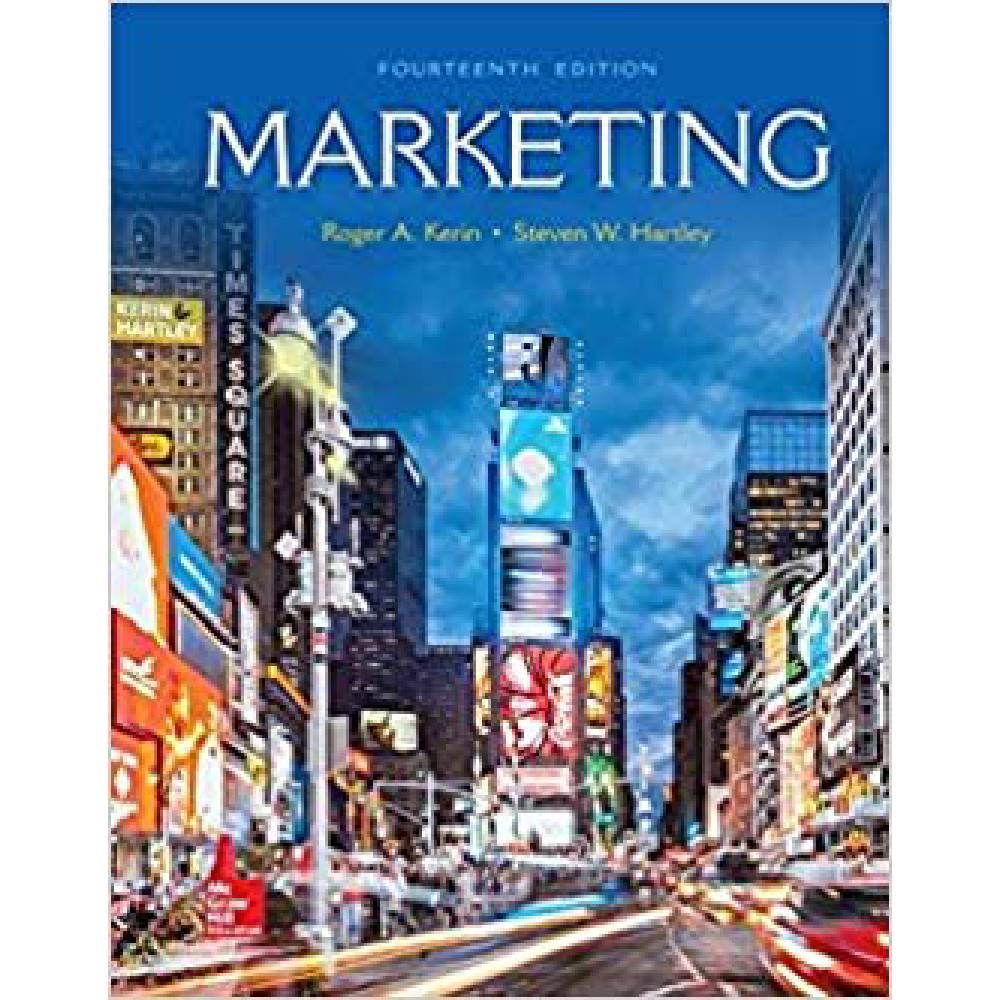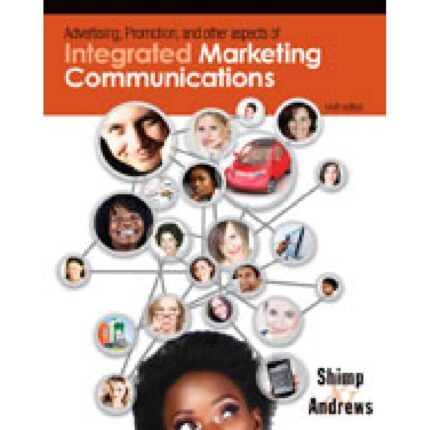Marketing 14th Edition By Roger – Test Bank
Chapter 11: Managing Successful Products, Services, and Brands
1) Which of the following statements about Gatorade is most accurate?
A) The name Gatorade was chosen because as an energy drink it “got you out the gate—fast.”
B) The name Gatorade was coined by a team who lost to the University of Florida Gators, attributing the Gator win to the “aid” they got from the rehydrating beverage.
C) The green color of the original lemon-lime Gatorade was based on the University of Florida’s alligator mascot.
D) Gatorade was developed by PepsiCo as a cause-marketing project to provide resources for women’s sports at the University of Florida as a result of the passage of Title IX in 1972.
E) Gatorade is the only sports drink marketer that doesn’t use sports celebrities to endorse its products.
Answer: B
Explanation: The name Gatorade was coined by a team who lost to the University of Florida Gators in the Orange Bowl.
Difficulty: 1 Easy
Topic: Branding Strategy
Learning Objective: 11-03 Recognize the importance of branding and alternative branding strategies.
Bloom’s: Remember
AACSB: Analytical Thinking
Accessibility: Keyboard Navigation
2) Gatorade is most likely in which stage of its product life cycle?
A) introduction
B) growth
C) maturity
D) decline
E) fad
Answer: C
Explanation: Numerous product classes and industries are in the maturity stage of their product life cycle today. These include soft drinks and sports drinks. Marketing attention in the maturity stage is often directed toward holding market share through further product differentiation. Gatorade has done this with its various product line extensions, such as the latest G Series, in an attempt to find new buyers.
Difficulty: 2 Medium
Topic: Branding Strategy
Learning Objective: 11-03 Recognize the importance of branding and alternative branding strategies.
Bloom’s: Understand
AACSB: Analytical Thinking
Accessibility: Keyboard Navigation
3) Which of the following statements regarding Gatorade’s branding is most accurate?
A) Gatorade uses the same formula for all its products and simply changes the brand name when introducing new flavors.
B) Gatorade’s success can be attributed to management’s decision to find and then stick with one channel of distribution.
C) Gatorade changed its color, packaging, and size of items in the product line for the domestic market so that they would not conflict with those marketed to foreign markets.
D) Gatorade has used the same packaging since the product debuted in 1965.
E) Gatorade has changed its product formulation, packaging, and advertising over the years in response to changes in the marketplace.
Answer: E
Explanation: Gatorade’s marketing performance is a direct result of continuous product improvement and masterful brand management. Gatorade has launched products with new formulae and a total packaging redesign.
Difficulty: 2 Medium
Topic: Product Life Cycle
Learning Objective: 11-02 Identify ways that marketing executives manage a product’s life cycle.
Bloom’s: Understand
AACSB: Analytical Thinking
Accessibility: Keyboard Navigation
4) Gatorade Thirst Quencher was concocted in 1965, but more recently its marketers introduced Gatorade G Series in 2010. This introduction is an example of a
A) brand extension.
B) cobranding.
C) primary demand.
D) product line extension.
E) product class.
Answer: D
Explanation: Product line extensions involve using a current brand name (Gatorade) to enter new market segments in its product class. Gatorade introduced the G Series product line extension in 2010 and 2011 to target different types of athletes.
Difficulty: 2 Medium
Topic: Branding Strategy
Learning Objective: 11-03 Recognize the importance of branding and alternative branding strategies.
Bloom’s: Understand
AACSB: Analytical Thinking
Accessibility: Keyboard Navigation
5) Gatorade offers a range of product offerings. The firm uses one name for all its products in a product class. Gatorade is using a ________ strategy.
A) multibranding
B) family branding
C) co-branding
D) dual branding
E) mixed branding
Answer: B
Explanation: With multiproduct branding (also known as family branding), a company uses one name for all of its products.
Difficulty: 3 Hard
Topic: Branding Strategy
Learning Objective: 11-03 Recognize the importance of branding and alternative branding strategies.
Bloom’s: Apply
AACSB: Analytical Thinking
Accessibility: Keyboard Navigation
6) The launch by Gatorade of Gatorade chews, bars, powders, shakes, and yogurt is evidence of
A) dynamic development.
B) discontinuous development.
C) product development.
D) symbiotic development.
E) simultaneous development.
Answer: C
Explanation: Product development within the G Series lines continues today as evidenced by the launch of Gatorade chews, bars, powders, shakes, and yogurt. Gatorade’s marketing performance is a direct result of continuous product improvement and masterful brand management.
Difficulty: 2 Medium
Topic: Product Life Cycle
Learning Objective: 11-02 Identify ways that marketing executives manage a product’s life cycle.
Bloom’s: Understand
AACSB: Analytical Thinking
Accessibility: Keyboard Navigation
7) Gatorade Thirst Quencher displays the letter G front and center along with the brand’s iconic bolt. This is an example of ________ benefits of its packaging.
A) perceptual
B) functional
C) communications
D) physical
E) tangible
Answer: A
Explanation: Perceptual benefits of packaging include the perception created in the consumer’s mind, such as the athletics ideals represented by Gatorade’s G.
Difficulty: 2 Medium
Topic: Packaging
Learning Objective: 11-02 Identify ways that marketing executives manage a product’s life cycle.
Bloom’s: Understand
AACSB: Analytical Thinking
Accessibility: Keyboard Navigation
8) A concept that describes the stages a product goes through in the marketplace—introduction, growth, maturity, and decline—is referred to as the
A) retail life cycle.
B) product life cycle.
C) marketing mix.
D) product growth cycle.
E) diffusion of product innovation.
Answer: B
Explanation: Key term definition—product life cycle.
Difficulty: 1 Easy
Topic: Product Life Cycle
Learning Objective: 11-01 Explain the product life-cycle concept.
Bloom’s: Remember
AACSB: Analytical Thinking
Accessibility: Keyboard Navigation
9) Product life cycle is defined as
A) the average life span of a product.
B) a concept that describes the stages a new product goes through from product concept to commercialization.
C) a concept that describes the stages a product goes through in the marketplace—early growth, accelerated development, maturity, and decline.
D) a concept that describes the stages a product goes through in the marketplace—introduction, growth, maturity, and decline.
E) the amount of time it takes a product innovation to completely diffuse in the marketplace.
Answer: D
Explanation: Key term definition—product life cycle.
Difficulty: 1 Easy
Topic: Product Life Cycle
Learning Objective: 11-01 Explain the product life-cycle concept.
Bloom’s: Remember
AACSB: Analytical Thinking
Accessibility: Keyboard Navigation













Reviews
There are no reviews yet.